For as long as he can remember, Charlie has always been interested in computers and gaming. It all started with the Sega Mega Drive and then evolved into PC gaming in his early teens. CS 1.6 was his first go at competitive gaming which soon evolved into CS:Source and now CS:GO - a game that he still plays (almost exclusively) today. Throughout that period he has also been a keen PC builder and enthusiast - dedicating a large portion of his time to the craft. My current rig is an ASUS 5700XT with AMD's Ryzen 3600X.
WePC is reader-supported. When you buy through links on our site, we may earn an affiliate commission. Learn more
Last Updated:
Which monitor size is best for what games? What if you do more than just game on your monitor? If this all seems a little confusing, don’t worry, WePC is here to help you with the process. Today we will assist you in selecting the best monitor size for your gaming needs and setup.
So, you have recently purchased a brand new gaming PC and are now on the lookout for a new gaming monitor to go with it. Do you grab that old dusty 60Hz monitor out of the garage (nothing wrong with this) or do you shop for a new model? Well, there is a lot to consider when buying a gaming monitor and most important of all is going to be the correct size.
How Is Monitor Size Measured?
Before we dive too deep into the nitty-gritty, monitor size is measured diagonally, just like TVs. So, a 22-inch display will actually be about 18 inches wide and 10 inches tall. In comparison, a 24-inch display will be about 20 inches wide and 12 inches tall. This may not sound like a lot, but there is a pretty significant bump in screen space for every few diagonal inches you get.
In fact, you can figure it out by just finding the area. Multiply 18 by 10 and you get 180 square inches. Multiply 20 by 12 and you get 240 square inches. A mere two diagonal inches gives you 60 square inches.
Below, we’re going to dive into the standard monitor sizes and common resolutions that go along with them.
What Are The Standard Monitor Sizes?
22-inch Monitor
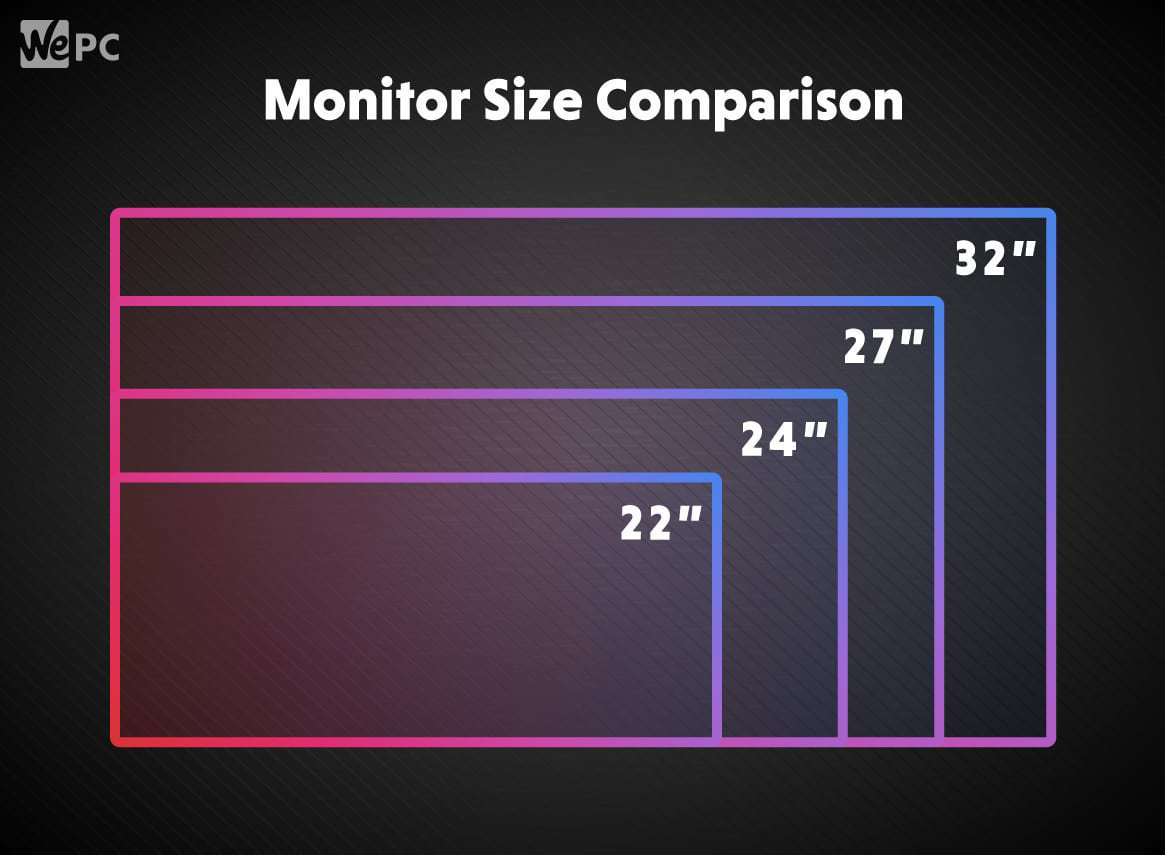
There are a plethora of gaming monitor sizes to chose from, with manufacturers catering for every budget and environment. A commonplace to start is around the 22-inch mark but gaming monitors can go all the way up to 49″ ultrawide and this is before we even get on to gaming TVs!
Considered on the smaller side nowadays, 22-inch monitors often have anywhere from a 1366×768 to a 1920×1080 (Full HD/1080p) resolution. These have been pretty much wiped out by the spread of 24-inch monitors, but you’ll still see a few of them popping up as solid budget options.
24-inch Monitor
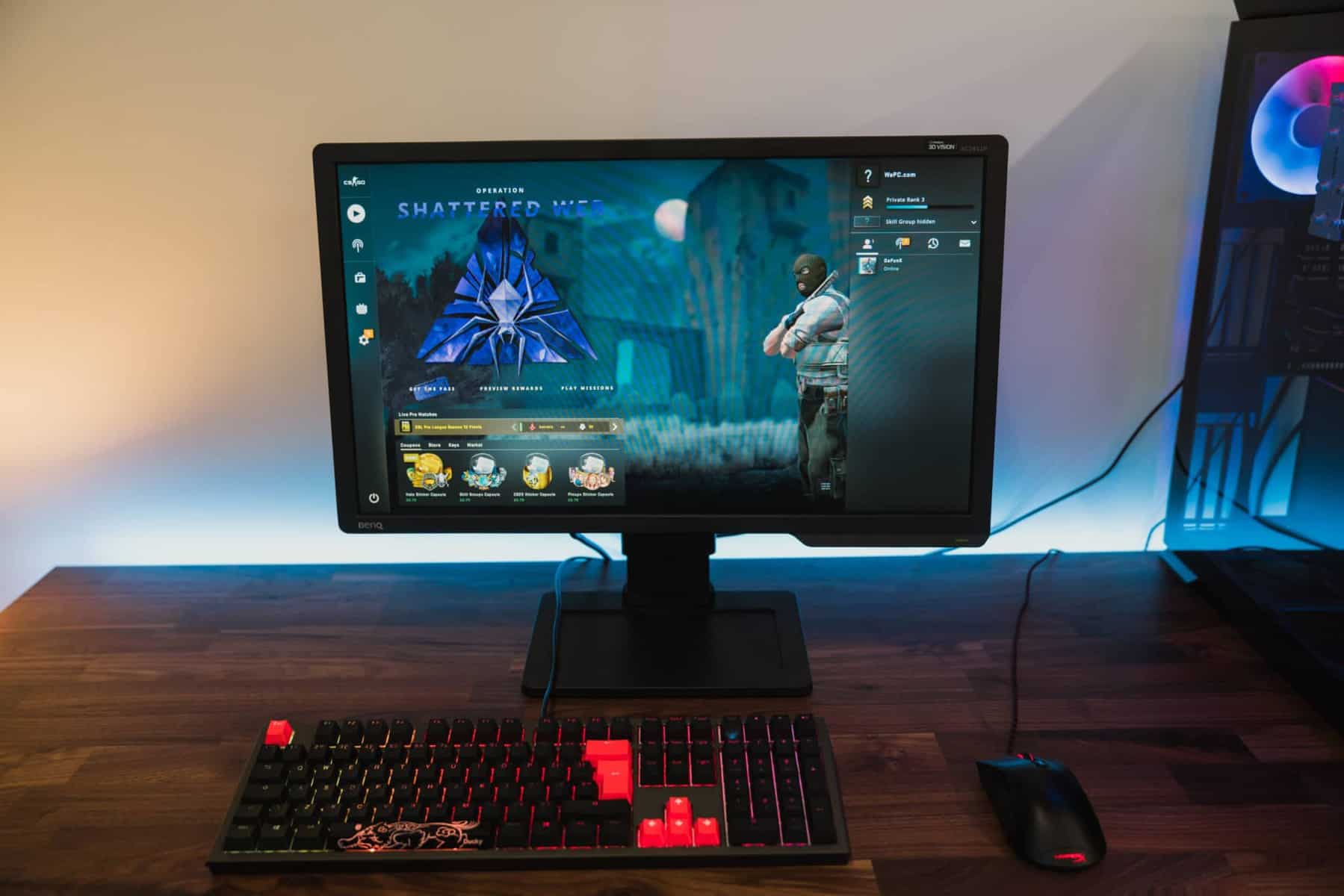
24-inch monitors are the standard and are most frequently seen with a 1080p resolution. You may also see some 1440p and even 4K 24-inch monitors out there, but these aren’t typically considered ideal for this resolution.
27-inch Monitor

27-inch monitors are usually seen with 1440p resolutions nowadays, though occasionally you’ll see 1080p or 4K on them as well. 27-inch monitors are the norm these days, with even the odd esports fanatics picking this up over the more sensible 24-inch.
32-inch Monitor
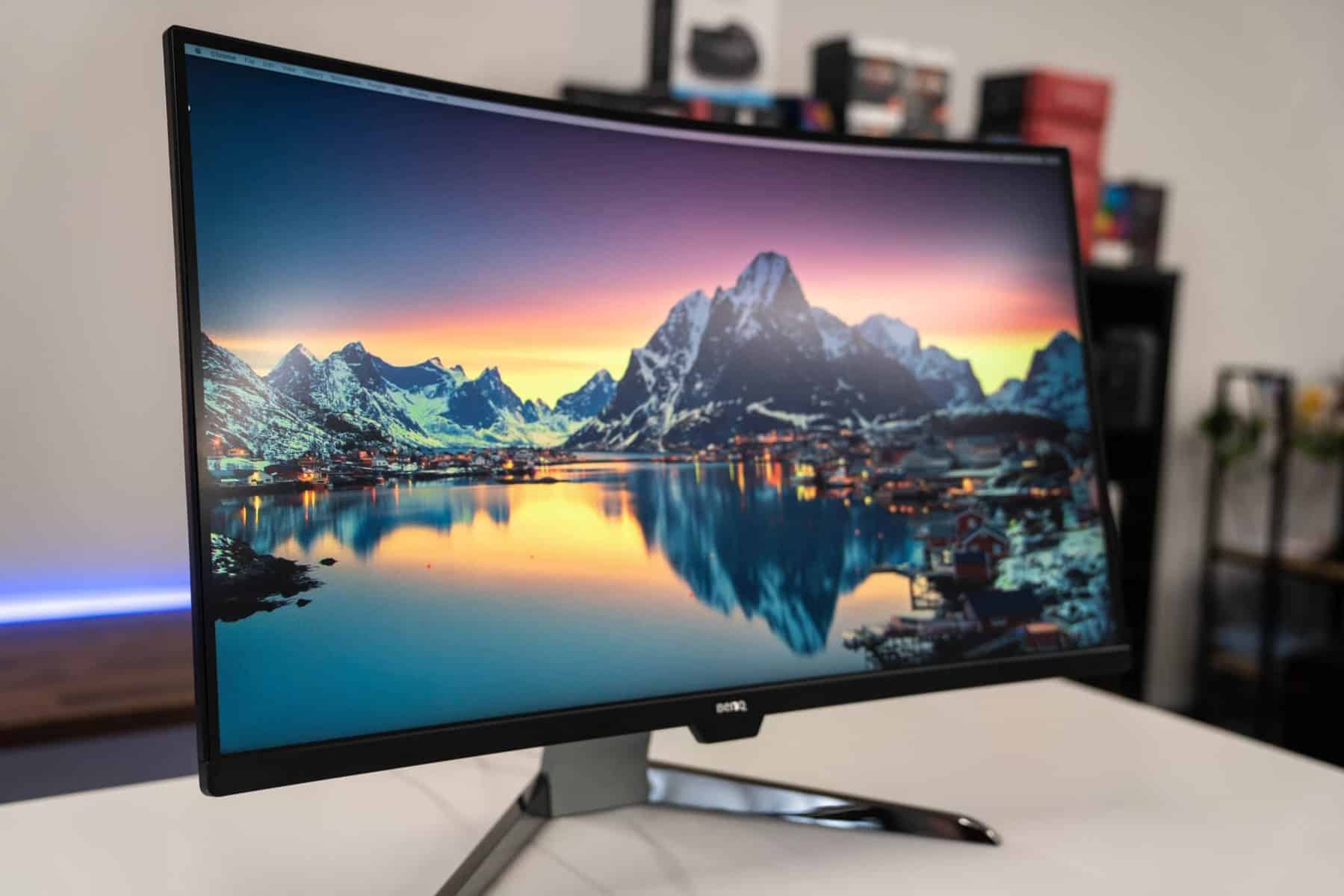
This is where some of you might be thinking,“Wait, isn’t that just a TV?”. While 32-inch monitors are on the larger side, they still hold a place with some gamers, offering a better viewing experience, and are usually found with resolutions anywhere from 1080p to 4K.
Bigger, Smaller, And Everything In-Between
There are smaller, larger, and in between displays. There’s nothing magically different about in-between sizes; they’re just out of the norm. However, I truly recommend sticking in the 24 to 27-inch range. Smaller and you lose too much. Larger and it starts to defeat the purpose of using a desktop to begin with.
What About Ultrawide Displays?

Most modern monitors have an aspect ratio of 16:9. Although 16:10 is seen somewhat rarely, for the sake of this article, we’re assuming the monitors to be 16:9. However, there is a recent influx of 21:9 monitors in the market; otherwise known as “Ultrawides”.
Make no mistake, ultrawide monitors can be a great option depending on the game title you favor most. Racing games, in particular, look their absolute best with an ultrawide, so getting a monitor with a high resolution could make a lot of sense.
Many modern FPS titles, for instance, won’t support a horizontal FOV wider than 90 degrees. This is fine on a 16:9 monitor, but on an ultrawide monitor, it can result in a stretched or distorted image. If you’re playing competitively or playing primarily FPS titles, then you probably don’t want to use an ultrawide display unless you know it’s compatible with your games of choice. Furthermore, with there being so much screen space, you can find yourself taking an extra second to check the mini-map, leaving you at a disadvantage over gamers with smaller aspect ratios.
Ultrawide monitors are in a shakier position when it comes to game support because a full implementation of ultrawide in a multiplayer game can be considered a competitive advantage.
A wider display equals a wider field of view, much wider, in the case of an ultrawide display. For this reason, many multiplayer titles, especially those in the FPS genre, choose not to support ultrawide displays, at least not to the point of giving them a higher FOV. For example, Overwatch had proper ultrawide support in beta but Blizzard opted for a FOV reduction approach in the full release.
What About Multi-Display Setups?
Multi-display setups are a whole other can of worms. Nobody seems to agree on what the right screen size is, how many screens you should have, or what configuration you should run them in.
But gaming with these can be pretty great, especially if you run them in a 1×3 or 3×3 configuration. They offer a similar level of immersion as an ultrawide display, but the same issues that apply with ultrawide gaming apply here.
Generally speaking, you don’t need to worry as much about compatibility here, since you can still play a game in fullscreen on one monitor and use the rest of your monitors for something else.
Which Monitor Size Is Best For Me?
What is the best screen size for gaming? The fact is, different size monitors are great for specific games but it is also down to what you do with your monitor too. For the ultimate immersive experience with your single-player games, there is no doubt that a 27-inch and upward will be best for the job. This goes for gamers who work from home too, giving you more screen real estate to play with when writing up those documents or editing videos. Competitive players may want more information available to their eyes without having to move their head or they may have a low powered PC that cant handle the larger screen sizes.
Let’s go over each size and run through why each option might be best for you.
22-inch
If you are tight on space, play relatively close to the screen, or are on a strict budget, a 22-inch monitor may be the only one you can go for. That being said, if you can afford a little extra you should always bump up to at least a 24-inch, 1080p display if you want a good gaming experience.
24-inch
If you’re going to be gaming at a 1080p resolution, then a 24-inch display would be best. A higher-res display at this size may result in a sharper image, but you can accomplish that with supersampling or anti-aliasing for much less money. Additionally, higher resolutions on 24-inch displays can make UI elements, subtitles, and even the operating system harder to interact with.
24-inch is still favored amongst a lot of esports enthusiasts and is also a great starting point for any new gamers out there.
27-inch
At normal viewing distance and a 1440p resolution, this would generally provide the best gaming experience. While 24”/1080p is fine, 27”/1440p is undoubtedly the better experience, thanks to the fact that it takes up more of your field of view and boasts a higher resolution. If you can run your games at native resolution on this display, you probably won’t need to kick up AA too much, and you shouldn’t experience any problems with UI and system navigation, either.
27-inch displays work well with 1080p too but at 1440p resolution you have a lot more screen space to work with, making this size monitor great for gaming and working from home too.
32-inch
Well as good as 32-inch gaming monitors look, the extra viewing distance required can potentially cause some eye strain depending on the games you are playing. With gaming monitors this size, you probably aren’t going to be able to sit as close as you would with your 24-27-inch monitored so beware of that. We are encroaching on TV territory here but in all honesty, a single-player game has never looked better than on a 32-inch screen, especially in 4K.
A TV
If you want to game at 4K on console, you should probably just get a TV. For PC gamers, 4K monitors vary in all the sizes above, giving you a nice plethora of options to choose from. If 32-inch seems small for your gaming plans though, it still may be worth investing in a TV over a monitor as you can benefit from the resolution and aspect ratio along with better viewing angles.
If you insist on having the highest resolution and the highest fidelity gaming experience, you should look into getting a 45-65 inch 4K TV. Then you can mount it on your wall, and use it for playing games from your couch or bed.
Final Word
Different monitor sizes can be best for a number of different gaming scenarios but assuming normal viewing distance and a 16:9 display, we recommend either a 1080p 24-inch monitor or a 1440p 27-inch monitor. A 1440p 27-inch monitor could be considered a little big for some esports players but if you can get used to a panel of this size, this is the optimal overall.
Aside from monitor size, you may also want to take aspects like panel type and refresh rate into consideration. Modern displays and GPUs will all support standards like HDMI and DisplayPort, but if you’re still using VGA or DVI you may want to double-check what ports your monitor supports and consider buying an adapter if you need one.
All that being said, don’t go buying large monitors with big resolutions unless you have the hardware to back it up. Before you look into buying a higher-res display, make sure that you have a system powerful enough to play games at your ideal resolutions. We recommend our and $500 and $600 builds for 1080p gaming, with $1000 and higher being ideal for 1440p, and $2000 and higher for 4K gaming.
What monitor size are you currently rocking? have you increased the size and noticed any changes with gameplay from your favorite AAA titles? Let us know over at the WePC Comunity and discuss it with the crew!

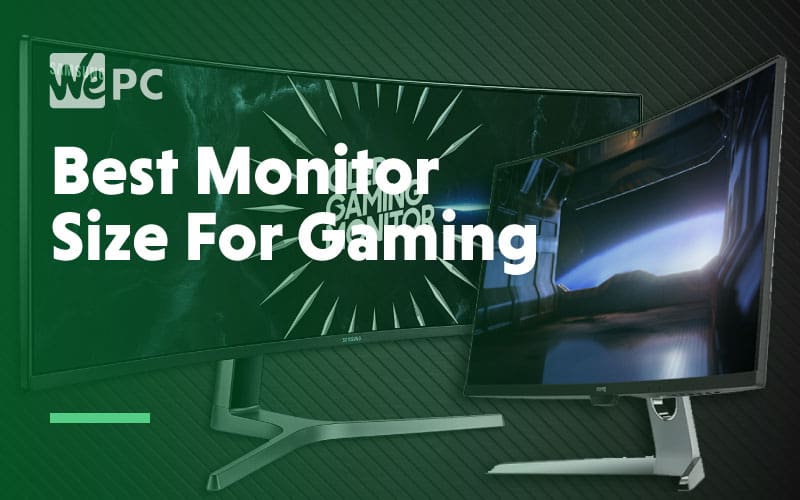
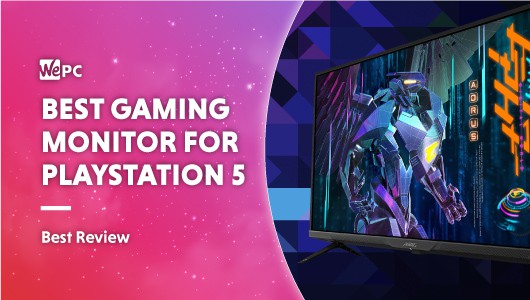
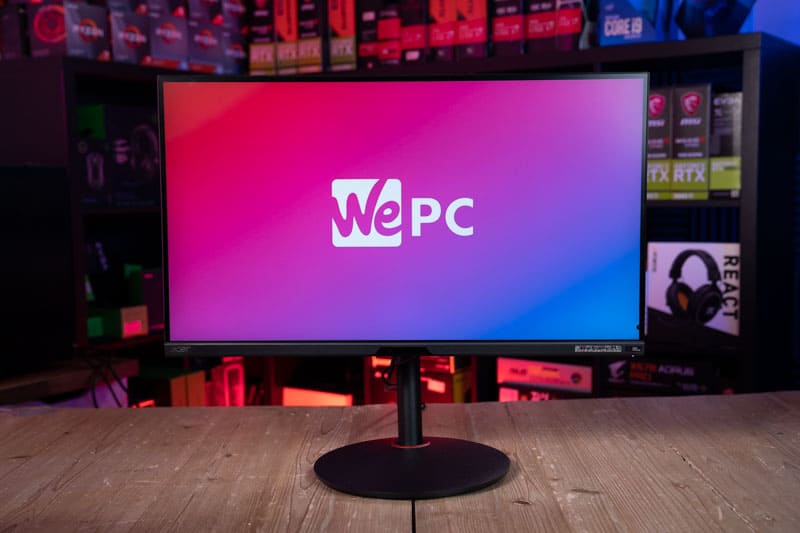
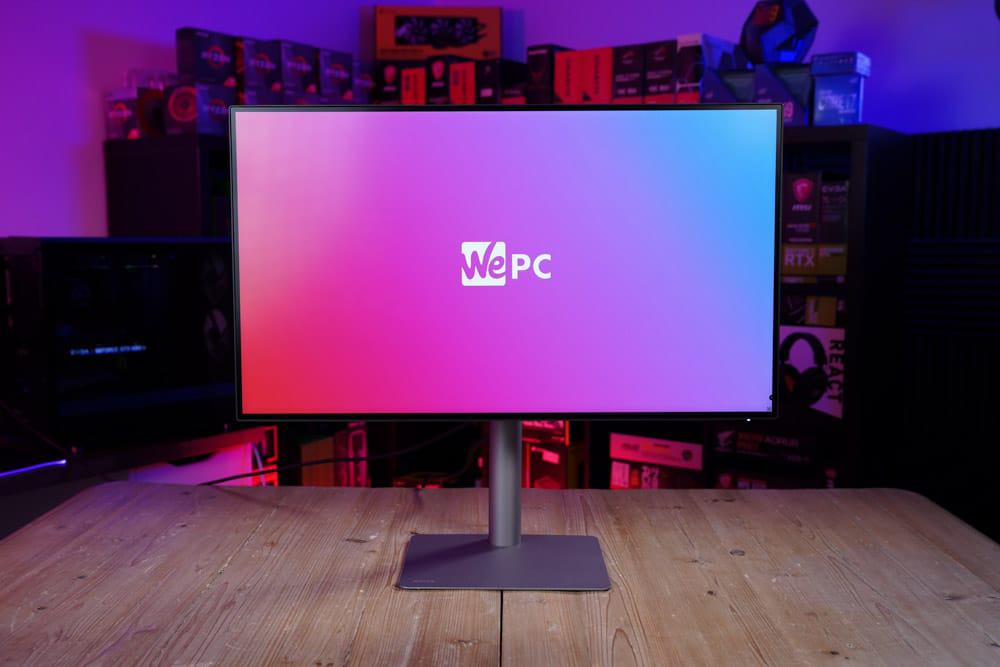
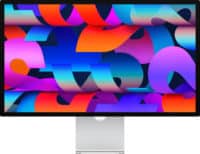
About to buy a monitor for ps4 pro (possible ps5 in future):
Considering the c27g1 as it costs 200$ right now. AOC that is, 27 inches with a display of 1080p.
Is there a big difference between 1080p and 1440p when youre gaming on ps4 pro?
Getting 10 yr old son PS5 and he already has gaming PC using 32″ TV for monitor. Can you recommend 1 monitor for both or 1 monitor for each please?
We intend upgrading his graphics card from 1060 to 3060 next year and would like to be future proof (ish) Been on YouTube and too much information for an old fogey none gamer like myself. We hope to purchase mid range.
Thanks in advance.
Hey Andy, I would say getting a monitor that can plug into both the PS5 and the PC so that you can switch easily and it wont take up a bunch of unnecessary space. Your budget really does depend on what you are going to get, but I wouldn’t recommend spending too much because those have minimal differences and I would get any 4k monitors with over 100Hz refresh rate to fit your needs.
Just bought 24 inch Mon and loving it
Will a 21.5 inch display would ok for 1080p. I am thinking 21.5 cause i will be playing some games at 900p to play them ultra.
My specs
Amd 1600
Asus Rx580 dual edition oc 4gb
2x8gb ram 3000mhz
B450 pro 4 mobo
Cx550
Thank you sir for guiding us if i have taken any wrong components then pls tell me. Thank you
The build isn’t bad at all, you should be able to push 100FPS at 1080 in a lot of games. I personally always go for a 24″ monitor when it comes to 1080p gaming – but a 21.5inch would work for sure.
I went from a 24inch 1080p to a 27inch 1440p and whilst the bigger screen was cool I don’t recommend it for competitive online FPS, I played much better and was getting more kills with the 24inch 1080p. I put this down to the fact that objects in game are bigger at this resolution and the small screen means your eyes balls have less distance to cover, in fact you can see the whole image at once and more quickly react.
I was thinking the same. I do have a 27″ and I sometimes feel this is to large. I need to move my eyes around much more and therefore miss out on some important details and get killed more often in the game.
What games you play Daz? CS:GO is my main competitive game and i use a lovely little 24 inch 1080p monitor that allows me to really capture everything that’s going on!
Me, still playing on a 19″ at 1920X1080.
I have a 27″ at work and its crap, too much space to cover.
Probably the best article available on the internet. I’ve been always confused about between different sizes of pc monitors and the optimal resolution required.
I wish I would have read this article before buying my laptop having 15.6″ screen with FHD display. Because I personally don’t like that because I’ve to use text scaling to 125% in order to use it and it doesn’t work well on all applications. The optimal resolution for 15″ screen is HD.